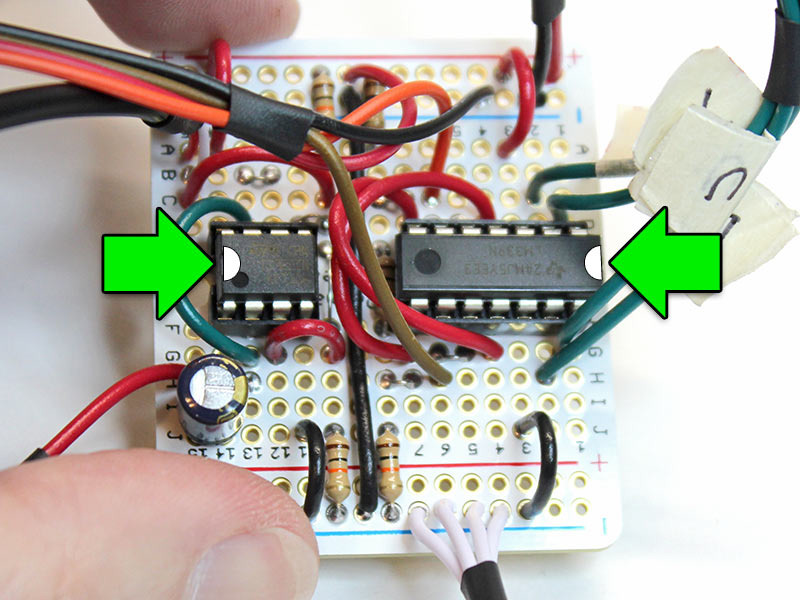The heat-shrink tube lets these wires rely on each other for support; they’re less likely to break off the board when cramming this into the case later.
The wires should enter from below the Cobbler and are soldered on the top. This is the opposite of the Perma Proto circuit. Clip away any extra protruding wire after soldering.
A to #21/27
B to #22
¢ to #23
1P to #18
Solder the four ribbon jumpers (+, X, Y, –) to the appropriate points on the Perma-Proto circuit, using the diagram at the top of this page for reference.
Since these wires are conjoined, they don’t really need heat-shrink tube, but you can add a piece if it makes you feel better. Remember to slide this on before any soldering.
These wires get two heat-shrink bits.
Notice also a second piece of heat-shrink has been added to the green joystick wires. But don’t shrink any of these yet.
Before making further connections between these two boards or any other parts, plan it out first…make sure you’re not tying knots. As you proceed, turn the boards different ways as necessary to find a smooth path between the two.
Now you can shrink that second piece of tube on the joystick wires.
See how the two wire bundles aren’t fighting each other or making pretzels? That kind of order is what you’re aiming for.
Slide a piece of heat-shrink tube a few inches down the cable (surrounding the whole thing, not just the copper wire).
Slide a second piece of heat-shrink tube over just the copper wire (cut one a little longer from your remaining unused tube) and heat it up. This covers most of the wire, but there’s still a tiny gap.
Slide the first piece back up so it covers the gap, apply heat.
If you have a headphone cable with red and black and copper wires, treat the black wire as if it were the white wire. The 'raw' copper wire is always the ground wire!
You can color-code these if you like, but it’s really not vital.
Then add two pieces of heat-shrink tube. Don’t shrink yet!






































